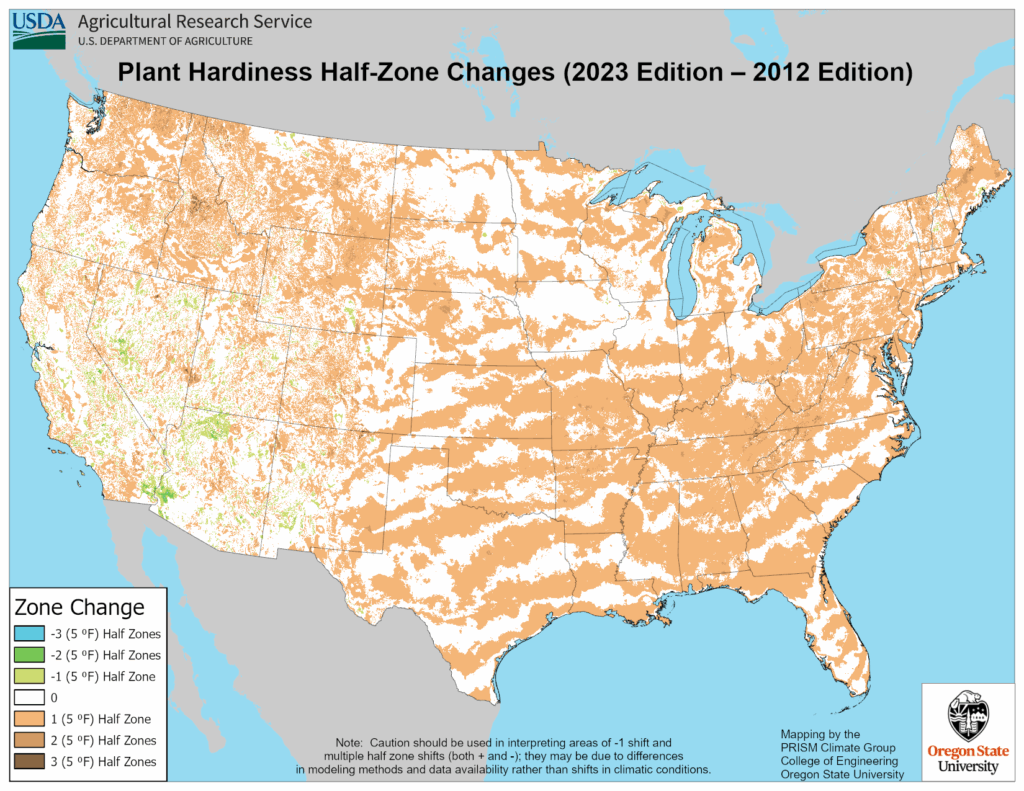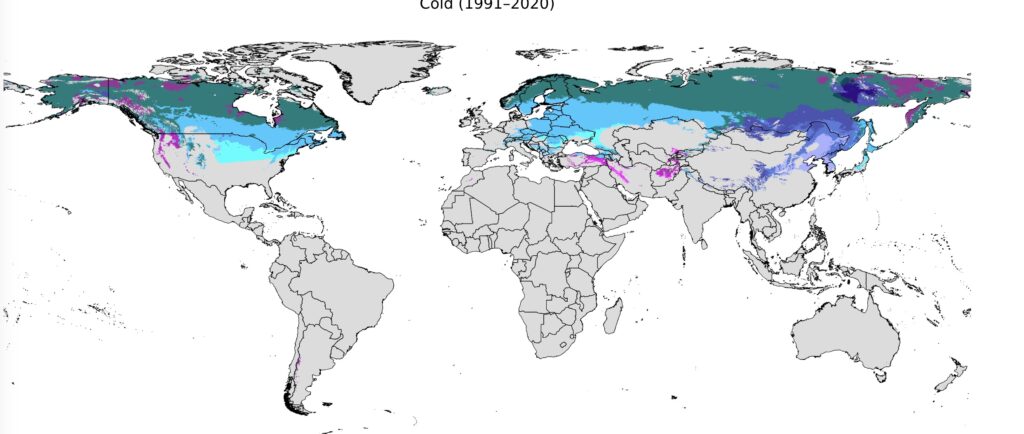A version of this article appeared in the Spring 2025 issue of Northern Gardener magazine.
Recent changes in the U.S. Department of Agriculture cold hardiness zone map left many gardeners confused. About half the United States had shifted a half zone warmer between maps released in 2012 and late 2023, making a significant part of Minnesota now a USDA Zone 5. Is it time to break out the palms and banana plants?
Maybe, but what northern gardeners can grow, whether it thrives and what you may want to grow in the future depends on much more than the zone rating. Understanding the purpose and limitations of hardiness zones and other factors that affect climate will help you pick the best plants for your garden.

What Zones Measure?
Since the early 20th century, plant breeders have used a cold hardiness rating to indicate whether a plant will survive winter in a particular area. The United States is divided into 13 zones, from the coldest (zone 1a, -60 degrees F) to the warmest (zone 13b, 65 degrees) based on the lowest average low temperature in a year.
For the most recent map, Oregon State University scientists collected measurements over 30 years from more than 13,000 weather stations, nearly doubling the number of data points from previous maps. The great detail in the map is one reason that much of the Twin Cities moved to zone 5, while pockets of zone 4 can be found scattered throughout. For example, Shoreview, a northern Twin Cities suburb, is zone 5 except for an area near Highway 10. Similar pockets of cold or warmth can be found in many areas, both in urban and rural areas. Temperatures are getting warmer overall, especially low temperatures, but the new zone map’s detail also captures the heat island effects of parking lots, roofs and other urban features.
Other than Alaska, only Minnesota, North Dakota, Montana and mountainous areas of Maine and Wyoming now have zone 3 growing areas. In contrast, in the zone map from 1990, half of Minnesota was rated zone 3 with a sliver of zone 2 on the northern border with Manitoba.
While cold hardiness zones are useful, they measure only one climate factor in plant survival. Things like day length, snow cover, humidity, wind, drought, soil moisture, even how long a cold-snap lasts can determine whether a plant thrives or dies.
Canada has its own cold hardiness map with a different numbering system. Europe also has its own cold hardiness map, with 11 zones from the frigid Arctic to the temperate Mediterranean. The American Horticultural Society has ratings for heat zones as well, which are based on how many days of the year have high temperatures above 86 degrees.
The Bigger Picture
The Köppen climate classification system was developed a century ago and still has value today. It divides climates into five basic types: tropical, arid, temperate, continental and polar with subdivisions in each type. The Upper Midwest has a humid continental climate with four distinct seasons including very cold, snowy winters and hot, humid summers with precipitation evenly distributed throughout the year. Similar climates can be found in eastern Europe, Russia and northern China, which is why many types of plants native to those areas grow well here. Consider peonies, which are native to large swaths of eastern Europe and north Asia but flourish in the plains of the Upper Midwest. Cotoneaster—a hedge plant that thrives in our northern climate—is native to vast areas of Europe and Asia, but not to North America. It’s our distinct climate that helps those plants thrive here.

Ecoregions, another climate classification system, are useful for choosing native plants. Developed by the U.S. Environmental Protection Agency, ecoregions define areas with similar topography, soil and climate that tend to support similar plant and animal life.
Gardening Here and Now
If your garden moved one zone warmer in the latest map, does it make sense to buy a plant that’s only hardy to your new zone or should you stick with reliable choices? A few things to remember:
- Plants are generally rated for the middle of the zone. If you are new to zone 5a, but folks on the next block are still zone 4b, be cautious.
- Know your microclimates. If your garden has areas that are warmer or colder than your zone rating (low spots or protected areas), choose plants based on the microclimate.
- Some zone ratings for plants are conservative. Plant companies don’t want to have their plants to have a bad reputation, so some zone ratings may be a bit conservative. If you’re on the fence about a plant, ask a knowledgeable garden center employee how well it performs in your area.
- If you are choosing non-native plants, look for hints that they may come from compatible climates to ours, such as Korean spice bush or Russian sage. Sometimes the botanical name will tell you the plant’s origin, such as Iris sibirica, a.k.a Siberian iris.
- Native plants should thrive here, of course. But if you want to pick the most valuable native plants for pollinators in your area, check the website of the National Wildlife Federation, which has a zip code search for best native choices.
- Monitor your garden. An inexpensive rain gauge, a thermometer and a notebook or garden journal app can go a long way toward helping you understand your garden’s climate—or at least the weather that affects it.
As northern gardeners, we’re used to volatile weather and can adapt to it. Changes in your hardiness zone don’t change your garden, but a warmer rating might give you extra permission to try something new in your garden.
Leave a Reply